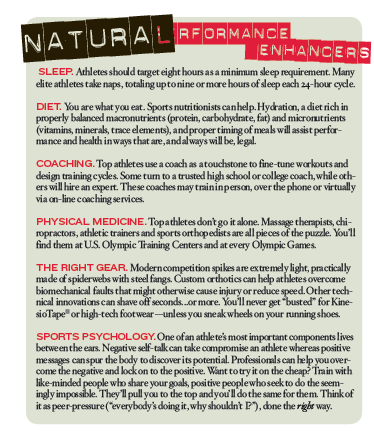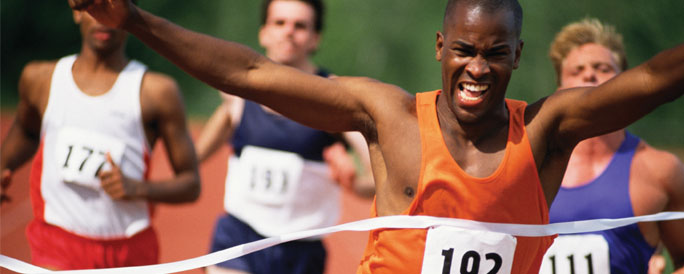In a world where role models are few and far between, we need heroes to help inspire and excite us. Athletes are one form of hero, and they can give us hope, tap into deep feelings within us and inspire generations. When those heroes rise to the level of icons, their falls can be disappointing, even devastating. Lance Armstrong’s story of rising to the top, falling down, getting back up to overcome a death-sentence and again rising to the top of his sport—while leading an international effort to fight cancer—inspired us. Then came his confession and subsequent fall, which gives us an opportunity to examine many issues.
What are PEDs?
PEDs include a variety of substances and schemes that enhance our ability to perform and do work. They range from caffeine to the Erythropoietin (EPO), testosterone and other steroids and growth hormones. Their prohibited use —performance enhancement—differs from therapeutic use, like steroids for treating asthma and recreational use. These substances and schemes can effectively boost muscle mass, improve oxygen use and reduce recovery time. The World Anti-Doping Agency (the international version of the USADA) maintains a list of banned and permitted substances at the Global Drug Reference Online (globaldro.com).

What are the effects of PEDs?
There are consequences to using PEDs. The comprehensive, state-run drug-administering program used in the 1970s and 1980s by the East Germans produced elite athletes, but psychological problems (anger, depression, mood swings) and even sexual identity issues resulted. Women with facial hair and deep voices and men with testicular shrinkage were warnings about attempts to artificially enhance nature. The East German system did produce champions and records especially in sports such as swimming and throwing events—but unfortunately, those results came at a high price—human lives lost.
In cycling, a wide variety of stimulants, bronchodilators (drugs to open up the airways), steroids and EPO are drugs of choice. EPO and other forms of blood-manipulation (“blood doping”) can improve oxygen use, but the price could be severe. Too high a hematocrit (percentage of red blood cells in the blood) means that the athlete is pumping a thick slurry of blood, and resultant clots can damage vision, cause strokes, gum up the lungs or heart, and can even cause sudden death.
What pressures do athletes face that cause some of them to take PEDs?
Athletes dive into the world of PEDs for a variety of reasons. There’s peer pressure, of course—the same reason kids may drive irresponsibly when around other kids, or try drugs, alcohol, sex or other behaviors. There’s also the pressure to perform. Some of this pressure is the old-fashioned desire to be successful; to feel important and be “the man.” But what if the athlete’s talent is also his or her career? The minimum average professional rookie’s salary is around $500,000. Try making that waiting tables or parking cars. Some have no hope of those riches; but might we judge two people differently if one is after the money and another seeks to leverage her athletic talent to be the first to go to college in her family? And how do we judge her when she suffers an injury that threatens the dream? The pressure to recover fast can be considerable, and the rationales become less nefarious and more understandable…but the risks remain.
Are PEDs Really “cheating” or Just part of modern sport?
Every competitor seeks an edge. If they didn’t, they wouldn’t bother to train. Somewhere between seeking a legitimate performance edge and cheating (cutting the course, elbowing in the post in hoops, greasing the pitch in baseball) lies a borderline. The role of organizations like USADA and WADA is to set that borderline and enforce it. Lance Armstrong famously assailed USADA—which aims to preserve the integrity of competition—as an organization with a vendetta to smear his good name (we all know how that turned out).
If a league accepts cheating, perhaps it’s no longer cheating; in other words, if post players in hoops are allowed to bang into each other, then the physical contact that may have been a foul in the 1960s is no longer a violation. Everyone’s doing it; however, there are consequences to this mindset. Sport is a microcosm of society, and if we cheat in sport perhaps we’ll cheat in class, or on our taxes or—heaven forbid—drive 74 in a 70 MPH zone. It works the other way too—society’s rigid or lax standards bleed into sport. I like the way Chicago Sun-Times columnist Norman Chad put it: “Just about everyone in cycling was cheating. So it was like Congress with spokes.”
Can a fallen athlete rise again?
Surely not all those who err are damned; but the common thread amongst liars and cheats is that they fail to “fess up” when caught. Disgraced Olympic Sprinter Ben Johnson claimed a spiked drink brought on his positive drug test. Armstrong claimed a “witch hunt” was the culprit. There are few positive stories of athletes who have turned things around. Some may point to 2012 Olympic Bronze Medalist Justin Gatlin as a counterpoint. Gatlin was the 2004 Olympic Gold Medalist (100m, track), but in 2006 he received an eight-year ban for testosterone abuse. He overcame the ban, getting it reduced to four years, returned to top form and finished third in what was at the time the greatest 100m final ever, led by two Jamaican greats. The problem is that he didn’t come clean in his admissions; or at least, few believe he did. Like many before him, he never took responsibility for his positive drug test. Instead, he blamed a massage therapist for rubbing a testosterone cream on his buttocks. Until athletes take responsibility, not only for their training and victories, but also for their challenges and failures, USADA will remain in a “drug war” versus those who would cheat to win.

